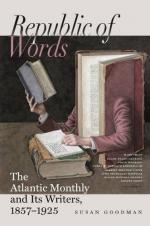“Yes,” said the monk, “all seek their own, and not the things that are Christ’s. It is well written, ‘Put not your trust in princes.’”
“And what prospect, what hope do you see for him?” said Agostino. “Will Florence stand firm?”
“I could have thought so once,” said the monk,—“in those days when I have seen counsellors and nobles and women of the highest degree all humbly craving to hear the word of God from his lips, and seeming to seek nothing so much as to purify their houses, their hands, and their hearts, that they might be worthy citizens of that commonwealth which has chosen the Lord Jesus for its gonfalonier. I have seen the very children thronging to kiss the hem of his robe, as he walked through the streets; but, oh, my friend, did not Jerusalem bring palms and spread its garments in the way of Christ only four days before he was crucified?”
The monk’s voice here faltered. He turned away and seemed to wrestle with a tempest of suppressed sobbing. A moment more, he looked heavenward and pointed up with a smile.
“Son,” he said, “you ask what hope there is. I answer, There is hope of such crowns as these wear who came out of great tribulation and now reign with Christ in glory.”
OUR ARTISTS IN ITALY.
LANDSCAPE ART.
A representation of Nature, in order to be a true landscape, must be organic. It must not present itself as an aggregation, but as a growth. It must manifest obedience to laws which are peculiarly its own, and through the operation of which it has developed from the moment of inception to that of maturity. And, moreover, that inception must have been near a human heart, that development must have been nourished by vitality derived from human life, and that maturity must be that of the divine unity to which tend all the mysterious operations of organizing energies.
We hold this to be the first essential condition of Landscape Art, the condition without which no rendering of Nature can be Art. Other points of excellence may be unattained. Let this be evident, that the production is an offspring of humanity, and it shall be perceived also that it partakes of whatever immortality the human heart inherits. Herein is concealed the whole secret of the value of pre-Raphaelite Art, and not, as we have been assured, in the faithfulness of its followers to the exact representation of the individual details of Nature. Each wrought from the love of Nature, consciously giving what truth he possessed, unconsciously giving of his own interior life. Each picture was the child of the painter. Yet, however much the ancient artist may have failed in rendering the specific truths of the external world, we can never attribute his failure to any disregard for the true. His picture never gives the impression of falsehood; and in the most erroneous record of the external there is ever the promise of more truth, and this promise is not that of the man, but of the principle governing the character of his picture.




